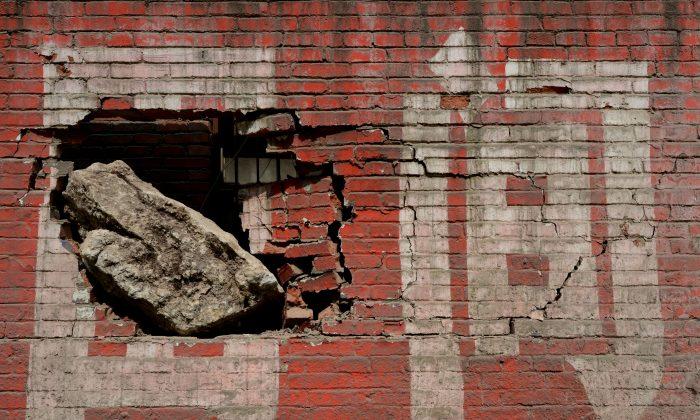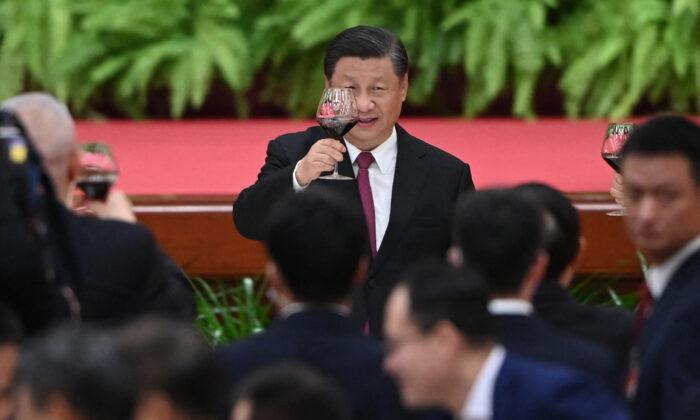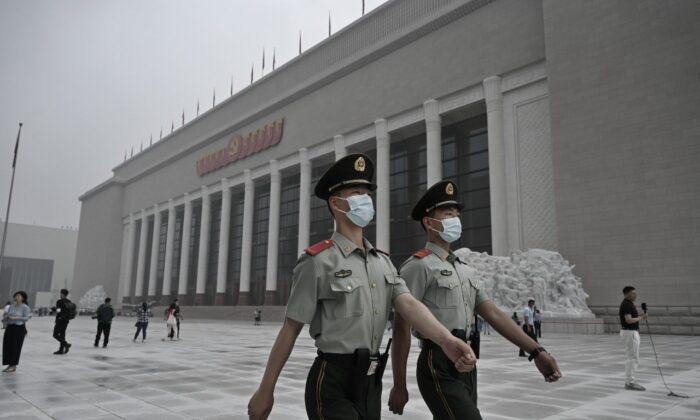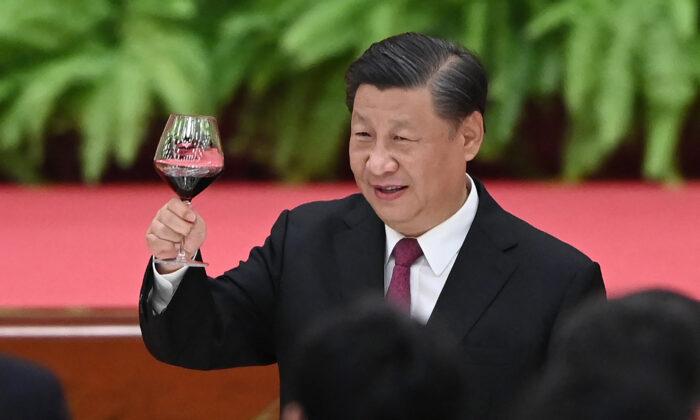Heartless love, depopulated villages. Flying with one wing, falling into a well—we are told this is “progress.”
The above may sound like opening lines to stories about calamities or Kafkaesque dystopias, but they are in fact all valid and perhaps unavoidable interpretations of modern Chinese writing.

Chinese script denotes meaning rather than sound, setting it apart from nearly all the world’s other living languages. But in today’s China, where communist authorities introduced simplified characters in the name of modernization, even basic concepts have been undermined by the altered forms of written words.
One of the things the communist officials did when they took power in China 65 years ago was to attack whatever they saw as “counter-revolutionary.” This assault mainly concerned social relations and religious faith, but the language was affected as well.
Following reforms, the character for “love” had the “heart” removed; the symbol for “flying” lost one of its wings, and the character meaning “to enter,” which used to contain a symbol meaning “bird,” was changed to include “well” (the kind used to draw water, or for throwing oneself into). “Village” had two-thirds of its volume exacted—the part meaning “person.”
Other examples: The character for “sage” or “holy,” no longer features its “mouth” and “ear,” suggesting a mindless intellectual. “Flour” has been voided of “wheat.” The word for “son” or “child,” which once symbolized an infant’s developing skull, was beheaded. “Buy” now consists of a “knife” hanging ominously over a “head.”
Simplified Script, Severed History
To find how this callous desecration of China’s traditional script occurred, we must look at recent history.
Chinese characters date back to legendary times, and were codified by the First Emperor of China around 220–210 B.C., over 2,000 years ago. Though some calligraphic or epistolary styles facilitated the use of unofficial shortcuts according to the writer’s personal taste, official forms remained mostly unchanged until recent history.
In the 20th century, however, China suffered culturally devastating wars and revolutions. The final imperial dynasty, the Qing (1644–1911) collapsed and was replaced by a republic that struggled against warlords to govern the country. Trying to diagnose China’s weaknesses, some radical intellectuals directed their frustration at traditional culture itself.

Among these scholars, the scholar Fu Sinian called Chinese characters the “writing of ox-demons and snake-gods.” Lu Xun, a novelist later made famous by the communist establishment, summed up his view of his country’s writing in the statement, “If Chinese characters are not destroyed, China will perish.”
When the Chinese Communist Party decided to simplify Chinese characters, many intellectuals were against the changes, but it was no good—Chairman Mao himself was in favor of simplification, followed by complete eradication of the traditional ideographic Chinese script. The first documents promulgating simplified Chinese characters for official use appeared in 1956 and then 1964.
The scholar and famous archaeologist Chen Mengjia, who had spoken out against simplification, was labeled a “rightist” and sent to a labor camp in 1957. In 1966, at the start of the Cultural Revolution, he was severely criticized and driven to suicide.
While simplified characters have become ubiquitous in mainland China, traditional scripts remain in use in Taiwan and Hong Kong. Furthermore, the plans to do away with Chinese characters altogether (as was the case in Vietnam, where the Sino-Vietnamese script was replaced by a romanized system devised by the French colonists) never came to fruition.
Simplified or Traditional?
As the world’s most populous nation makes more connections with the rest of the world, study of Chinese as a foreign language is quickly gaining in popularity. More often than not, students of Chinese in American universities and high schools get a choice between simplified and traditional, but the massive size and influence of the mainland means that most people learn simplified by default. Studying traditional characters means going against the grain.
However, traditional Chinese script is essential for a deeper understanding of the language. Many characters were simplified with only the modern spoken language in mind, ignoring the ancient styles that stressed subtlety and multilayered meaning. This holds true especially for the core texts of the great philosophers and writers of antiquity, who chose their words carefully and sparingly.
Historically, Chinese characters helped maintain a unified identity across diverse ethnic groups and linguistic communities in a nation the size of Europe, and were used as a written lingua franca even among the literati of non-Chinese nations. The everyday Japanese language still uses thousands of Chinese characters in conjunction with its own phonetic script, and when Korean and Vietnamese scholars study their own histories, they must first achieve literacy in the old Chinese script.













Friends Read Free